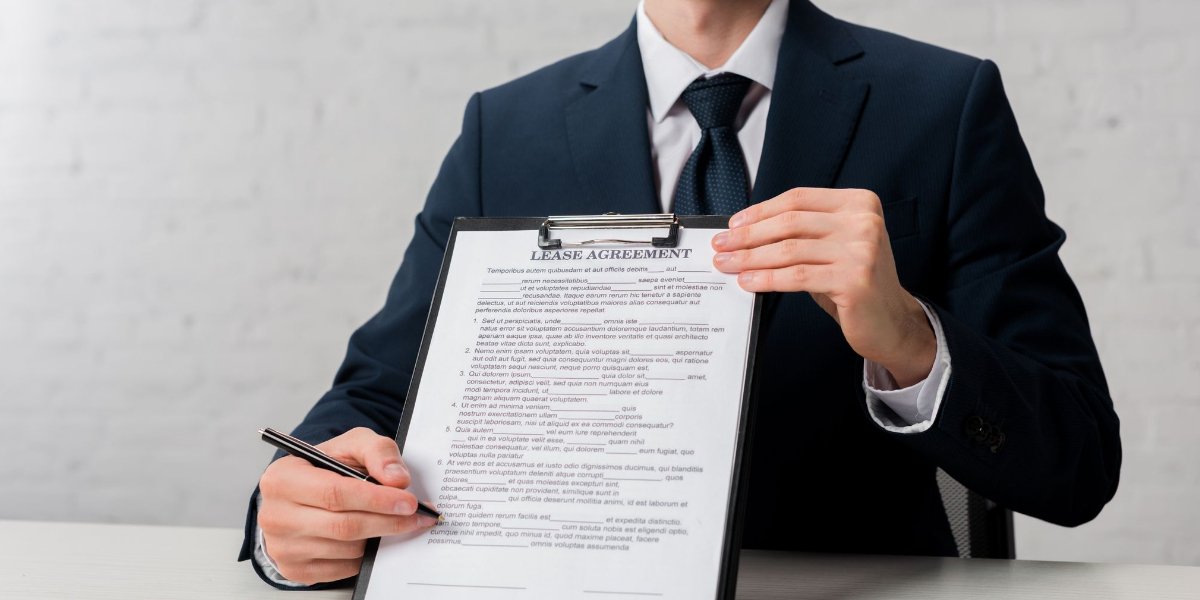Whether you’ve only just purchased a rental property in one or more real estate transactions or you’ve been a landlord for years, it is critical that you know what types of statements and information must be contained in rental agreements for them to be legally binding.
Every landlord and tenant have rights and responsibilities that must be contained within this important document, which must address provincial and local laws. You may want to see the help of a Thornhill property manager or an expert in other parts of Toronto for assistance.
A month-to-month lease will differ from short-term agreements. A landlord and their tenants each have different legal rights and responsibilities, no matter how long the lease is for. The landlord will have to pay for certain repairs and keep the property clean until a new tenant moves in.
On the other hand, the tenant may be liable for certain kinds of property damage and must give proper notice to their landlord before they move out. The tenant will have to pay rent for their leased property in a timely manner. In the event of late payment, most leases will contain a grace period, but after that, there may be an added fee. A standard lease should set forth all the necessary terms between the landlord and tenant.
Tenant rights should include coverage for normal wear and tear on the property. The lease agreement should also state clearly the rent amount, payment instructions, and other fees like pet fees.
Landlord rights and responsibilities include following every governing law when writing their rental agreements. A lease agreement must include information like the lease period, terms that may result in lease termination, fees for late rent payments, and how much notice they must give before moving out.
If the tenant leaves early before their lease agreement is up, they may pay a fee. Additionally, the tenant typically pays a security deposit when they move in. Of course, the local governing law may include a variety of other requirements.
Both you and your tenant must sign the lease agreement. At the end of the day, all these required disclosures for the contract are aimed at helping the tenant and landlord avoid disputes. After all, verbal agreements won’t cut it.
Although Ontario has a standard lease agreement that should be used for all residential leases, it’s important to know what types of statements should be included in lease agreements in case you want to write your own lease.
Here’s everything you need to know about creating lease agreement templates and what to include in a lease. You might want a Mississauga property management company or law firm to draw up your residential leases to ensure that they are legally binding under every applicable governing law.
What Is a Written Lease Agreement?
A lease agreement is a document that constitutes a contract between the owner of leased property and a tenant. When it is signed by both parties, it becomes legally binding.
It’s important to understand the difference between a rental agreement and a lease agreement. Many landlords use these terms interchangeably, but they are slightly different.
However, the key difference between these two documents is the length of the contract. In general, a lease agreement covers a lease period of six to 12 months, while a rental agreement covers shorter periods of about 30 days.
Generally, a rental agreement is considered a month-to-month contract, while lease agreements last much longer. Rental and lease agreements contain various provisions, many of which are the same. However, every rental or lease agreement may contain different terms, although some items are standard.
Before You Write Up the Rental Agreement
Before writing the lease agreement, you should gather various pieces of information that must be contained in it. Tenants require that lease agreements include the basics like the names and contacts of the tenants that will occupy the property and your contact information.
You will also want to outline the lease agreement before placing anything official down on paper. You should also determine the key provisions you want to include, build the clauses that will be included, and consult the local governing law. In some cases, you may want to consult a law firm or a Toronto or Markham property management company in building a lease agreement.
What’s Typically Included in a Lease Agreement?
A prospective tenant will expect to find certain provisions in a lease agreement. Every contract must also abide by local laws. Here are all the provisions that must be contained in the agreement.
Party Information
First, you must include the names and contact information of the landlord and the tenant. You should also include the address of the property being rented. If necessary, like if the property has no specific address of its own, you might also have to describe the property in the lease.
Late Fees and Penalties
The agreement should also include details about every fee or penalty attached to the lease. For example, in many cases, the tenant pays late fees if they don’t make their rent payments on time. In the event of a late rent payment, the amount of the fee should be clear.
The lease agreement should also specify every other potential penalty, including the amount and circumstances that would result in it.
Security Deposit
Generally, a lease agreement also includes a security deposit. It should state clearly how much the security deposit is and what circumstances would result in the tenant losing their deposit. For example, if the landlord discovers significant property damage when the tenant moves out, the deposit will be forfeited.
Tenant Rights and Responsibilities
The Landlord Tenant Board establishes all tenant rights and responsibilities. Local laws cover a variety of different topics that must be included in the lease agreement.
For example, the landlord will be responsible for certain repairs while the tenant occupies the property. The landlord also agrees to allow for normal wear and tear on the property, not holding the tenant liable for it. Additionally, the landlord must abide by all safety laws, repairing any part of the unit within a timely manner and ensuring that no part of the real estate is damaged in such a way that it presents a hazard for the occupant.
In exchange, the tenant is responsible for paying their rent on time or within the grace period set forth in the lease agreement. Sometimes they may also be responsible for paying the utility bills associated with the property. The tenant also must not use the property to engage in illegal activity. Upon vacating the property, the tenant must return it in “broom-clean” condition.
Landlord Rights and Responsibilities
On the other hand, landlords are responsible for keeping the property in line with the local health board. They must perform any safety-related repairs as soon as possible, and they must provide clear information regarding their access to the property for repairs, maintenance, and inspection.
Landlord rights include having the property returned without significant damage beyond what would normally be expected from the average person occupying the real estate. Remember, owning property for rent is essentially operating a small business, so a landlord has the right to receive all payments and penalties listed within the lease agreement.
Property-Identifying Information
The lease agreement should also give the address of the property and a description of it if necessary.
Term of the Lease
Another critical part of the lease agreement is the length of the lease period. As already stated, the time period can range from 30 days to a year. The agreement should also state the terms and conditions of lease termination, including what would be required of tenants being forced to vacate the premises.
Rent Amount
In addition to the length of the lease period, the lease should also give the amount of the monthly rent. The tenant will be required to pay rent on time every month. In the event that doesn’t pay their rent money every month, there is often a penalty on top of the rent amount. The contract should state the amount of the penalty and how long after the due date the tenant has to pay their rent.
Lease Termination & Remedy
The lease should also give all circumstances that would result in termination. Examples of events that might lead to lease termination include excessive damage to the property, not paying rent over a certain period of time, or any other reasonable provision the landlord wants to include.
However, renters in Ontario have certain rights regarding eviction. Landlords may not just evict for any reason. You may want to consult a law firm to ensure that any of the provisions you want to include are not against the local laws in Ontario.
Additionally, you may have to compensate your renters if you want to renovate, repair, or demolish the property. For example, landlords who want to evict renters so that they can use the unit for themselves or their family or sell it and allow the purchaser to use it will have to pay one month’s rent or offer them another unit.
All of these provisions must be included in the lease in plain language so that the renter can easily understand them. Renters have the right to pursue compensation in the event of a lease termination done in bad faith.
On the other hand, the lease should also state all aspects of the renewal procedure in case the tenants want to extend the lease. A property manager in East York or the rest of Toronto can help.
Governing Law
The Landlord Tenant Board sets every governing law in Ontario, including safety laws and other rules and regulations, such as those governing local health. It is critical that every lease contains all the necessary provisions so that it can be legally enforced.
For example, landlords must give tenants a 60-day notice before they have to move out. However, they can’t do anything to violate the lease while it is still in force. If they do, compensation is typically required.
If you have any questions about the laws governing real estate, landlords, and tenants, you might want to consult a law firm for assistance. Additionally, a property management company in North York or other parts of the Greater Toronto Area will be able to help.
Types of Commercial Lease Agreements

When writing a commercial lease, it’s important to realize that there are different kinds. Of course, some provisions are standard, like a ban against illegal activity or rules regarding uses of a commercial building. Beyond that, it’s critical to understand the different types of commercial leases.
Net Lease
A net lease is a commercial lease that states that the tenant pays a percentage of the building’s operating expenses, such as utilities, property taxes, maintenance costs, or insurance. A net lease clearly states each party’s share of the building’s expenses based on the percentage of the property they are renting.
There are three different types of net leases:
Double Net Lease
A double net lease requires the occupant to pay rent, property taxes, utilities, and insurance on the real estate they are renting. However, the lessor is responsible for the expenses associated with the maintenance of the building. Due to this arrangement, the base monthly payment is lower because the occupant pays a larger share of the building’s expenses.
Triple Net Lease
A triple net lease requires the lessee to pay monthly rent payments, utilities, and all of the operating expenses associated with the building. These expenses include maintenance expenses, including those associated with any common areas, insurance, and property taxes.
In most cases, a triple net lease has a longer lease period and a lower monthly payment because the tenant agrees to cover all the expenses associated with operating and occupying the building.
Absolute Triple Net Lease
An absolute triple net lease differs from a triple net lease in the expenses the tenant agrees to cover. An absolute triple net lease requires the tenant to pay for everything associated with the building. These expenses include all repair costs and maintenance.
Essentially an absolute triple net lease is an agreement that makes it appear as if the tenant owns the building, but they don’t have to purchase it. In this case, the monthly occupancy payments are the lowest of all the different net lease types.
Percentage Lease
A percentage lease clearly states that the lessee must make a base monthly payment plus pay a percentage of their gross sales over a set amount. In exchange, the lessor pays all property taxes and expenses related to maintenance and insurance. This type of lease is usually for retail space.
Generally, property owners require about 7% of the lessee’s gross sales for this type of lease. An agreement that requires at least 10% or more of the gross sales is highly uncommon and requires close examination by the prospective tenant.
Fully Serviced Lease
A fully serviced lease, also referred to as a gross lease, requires the lessee to make a monthly base payment. The lessor pays all other expenses associated with the operation and occupancy of the building, including maintenance costs, insurance, and property taxes.
Generally, this kind of arrangement requires larger monthly payments from the lessee. However, some small business owners may find it much easier to make a single payment every month instead of having to handle all the other daily and monthly expenses related to the building their business occupies.
Some fully serviced leases require the renters to pay additional expenses in addition to their monthly rental payments after they have rented the space for the first year. Landlords who want to include this kind of provision would do well to call their prospective renter’s attention to it.
A Toronto or Burlington property management company can help you ensure that this provision meets all requirements and is made clear to the business owner before they sign the lease.
FAQs
Who Can Write You a Lease Agreement?
The easiest way to have a lease written is to use the standard lease for residential properties. You should also ensure that you have a good lawyer for commercial units.
However, knowing all the information contained in this article will help you make sure everything is covered in your lease before you bring it to a tenant to sign.
How to Make a Lease Agreement Legal?
The first step to making a lease legal is to include all the provisions that are required to be in there by law. An Etobicoke property management company will offer suggestions about optional provisions and ensure that any additional terms you want are included in the lease.
Once the lease is complete as per your requests and requirements and what is needed by law, both you and your tenant will have to sign it. The lease is not valid unless both signatures are attached. It must be filled in properly, and all the required sections must be signed or initialed.
Finally, the lessee will have to make the appropriate payments to officially put the lease into force.
Can I Write My Own Lease Agreement?
Writing your own lease agreement is a risky move so we would advise against that. Remember, owning and renting out real estate is essentially operating a small business. As a result, it’s always best to have an Aurora or Greater Toronto Area property management company help you write your lease.
Final Thoughts
No matter which part of the Greater Toronto Area you are in, whether it’s York Mills, Bayview Village, Downsview, or anywhere else in North York, property management requires significant expertise and knowledge. The lease is arguably the most important tool in your property management toolkit.
Without all the necessary provisions, you run the risk of not complying with local laws or not including every term you want to include. Having a knowledgeable property manager in Toronto. Consulting with Buttonwood will make all the difference in the world when it comes to developing your lease.

